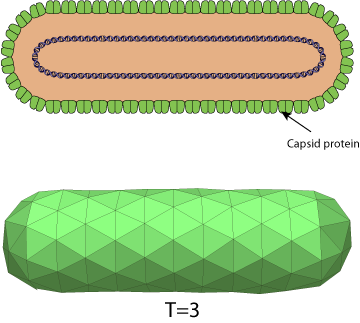VIRION

Non enveloped, bacilliform particles of 130 x 30 nm. The capsid is presumably based on a T=3 icosahedral symmetry.
GENOME
Circular double stranded DNA of about 8000 base pairs with discontinuities in both strands: one in the transcribed strand and one to three in the non-transcribed strand.
GENE EXPRESSION
ORF2 and ORF3 are expressed by leaky scanning of genomic RNA.
ENZYMES
- Reverse transcriptase
- RNAse H [RT]
- Polyprotein protease (Peptidase A3) [PRO]
REPLICATION
CYTOPLASMIC / NUCLEAR
- Attachment of viral proteins to host receptors mediates entry into the host cell.
- The viral dsDNA is released into the nucleus.
- Transcribed by host RNA polymerase II.
- mRNA translation produces viral proteins.
- Genomic RNA is retrotranscribed into new dsDNA genomes in the cytoplasm.
- Genomes are encapsidated by the capsid protein and form new virions.
- The virion infects either a new cell by plasmodesmata movement, or by insect vector uptake.

